(I think I’m going to switch to mid-week from here on; people seem to like it.) Our regular listen to and look at living, breathing composers and performers that you may not know yet, but I know you should… And can, right here and now, since they’re nice enough to offer so much good listening online:
Tom Rojo Poller (b. 1978 — Germany)
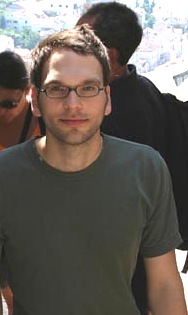 Born in Osnabrück, Poller began his composition studies in 1996 at the Hochschule für Musik Detmold, continuing with Prof. Walter Zimmermann at the Universität der Künste Berlin (UdK). After an exchange year at the Royal College of Music London in 2003, he received his diploma and returned to Berlin where he’s just finished his postgraduate work. Since 1999 he’s also been studying German Literature, Philosophy and Musicology at the Humboldt-University in Berlin. Last year, as participant of the Global-Interplay-project, he attended conferences in Accra, Ghana.
Born in Osnabrück, Poller began his composition studies in 1996 at the Hochschule für Musik Detmold, continuing with Prof. Walter Zimmermann at the Universität der Künste Berlin (UdK). After an exchange year at the Royal College of Music London in 2003, he received his diploma and returned to Berlin where he’s just finished his postgraduate work. Since 1999 he’s also been studying German Literature, Philosophy and Musicology at the Humboldt-University in Berlin. Last year, as participant of the Global-Interplay-project, he attended conferences in Accra, Ghana.
Tom is especially interested in the temporal aspect of music (including polyrhythmical/polymetrical music); music theater — or more generally, various forms of musical representation; the relation between music and language; the philosophy of music (especially music and the emotions, music and understanding). His music is deeply rooted in the western European musical tradition, but is greatly influenced by its lesser known aspects (e.g. medieval and renaissance music, rhetorical aspects of baroque music).
His website shows off all of these interests; his music page there is especially generous about providing quality listening to his already-amazing pieces (the recordings and performances are generally top-notch). This is someone to keep an eye on in the coming years.
………………….
Tristan Fuentes (b. 1951 — Mexico), Joe Holmquist (b. 1951 — US)
The official word is:
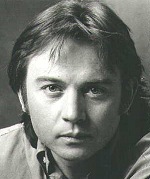 Tristan Fuentes, born 1951 in Mexico City, is the son of a school teacher and barrister. His first ensemble experience was “Cherub Choir” as a five-year-old, and piano studies followed at age six. In the fifth grade he had the opportunity to join the class band. It was denied that he play trumpet but firmly suggested that he play drums. At age fifteen he organized his first combo and started playing professionally.
Tristan Fuentes, born 1951 in Mexico City, is the son of a school teacher and barrister. His first ensemble experience was “Cherub Choir” as a five-year-old, and piano studies followed at age six. In the fifth grade he had the opportunity to join the class band. It was denied that he play trumpet but firmly suggested that he play drums. At age fifteen he organized his first combo and started playing professionally.
As a university student he pursued a dual track of classical music and rock & roll. In his mid-twenties he studied percussion, music theory, and composition at the New England Conservatory and suffered under the tutelage of Gunther Schuller. Upon his liberation with a Master of Music degree, he set upon a diverse life of people, places, languages, and art objects. His main compositional influences have been Terry Riley, John Cage, and Frederic Rzewski. His works are primarily for small instrumental ensembles, often including exotic percussion.
Fuentes describes his music as “liberated minimalism”. As a theory and composition student he was trained in the tradition of Paul Hindemith and the later serialists, while outside of class he was listening to and playing rock, jazz, and minimalist music. His works are characterized by catchy melodies and strong rhythms. Harmonically the music is tonal, with dissonance as the main device for creating tension between compositional elements.
Or…
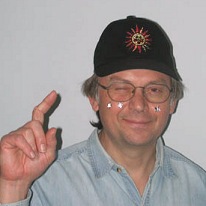 Joe Holmquist was born in 1951 in Benson, Minnesota, a medium-sized community out in the west-central part of the state (in this case, medium-sized means 3,000 souls). There wasn’t much along the line of organized activities for kids, so it was common to participate in music organizations both at school and at church. “…At the time, I didn’t think I was learning anything in particular from those music activities, but I was!…”
Joe Holmquist was born in 1951 in Benson, Minnesota, a medium-sized community out in the west-central part of the state (in this case, medium-sized means 3,000 souls). There wasn’t much along the line of organized activities for kids, so it was common to participate in music organizations both at school and at church. “…At the time, I didn’t think I was learning anything in particular from those music activities, but I was!…”
His first ensemble experience was “Cherub Choir” as a five-year-old, and piano studies followed at age six. In the fifth grade he had the opportunity to join the class band. It was denied that he play trumpet but firmly suggested that he play drums. At age fifteen he organized his first combo and started playing professionally.
As a university student he pursued a dual track of classical music and rock & roll. In his mid-twenties he studied percussion, music theory, and composition at the New England Conservatory and suffered under the tutelage of Gunther Schuller. Upon his liberation with a Master of Music degree, he set upon a diverse life of people, places, languages, and art objects. His main compositional influences have been Terry Riley, John Cage, and Frederic Rzewski. His works are primarily for small instrumental ensembles, often including exotic percussion.
Holmquist describes his music as “liberated minimalism”. As a theory and composition student he was trained in the tradition of Paul Hindemith and the later serialists, while outside of class he was listening to and playing rock, jazz, and minimalist music. His works are characterized by catchy melodies and strong rhythms. Harmonically the music is tonal, with dissonance as the main device for creating tension between compositional elements.
Hmmm… The truth is what we will, right? And the truth is that Joe’s site, besides highlighting his excellence as a percussionist, kindly hosts a wealth of Tristan Fuentes pieces in MP3. Bright, propulsive and non-cheesily tuneful, They’re well worth getting to know.
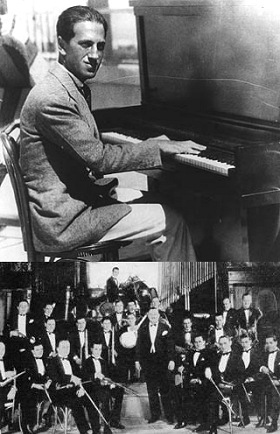 Made shortly after the premiere performance, and a year before the electric microphone came into use. The two records are on different pages: record one is
Made shortly after the premiere performance, and a year before the electric microphone came into use. The two records are on different pages: record one is 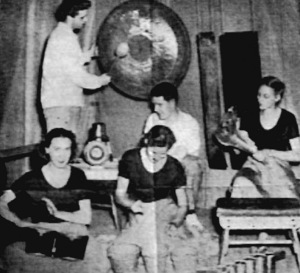 An absolutely fascinating audio document,
An absolutely fascinating audio document, 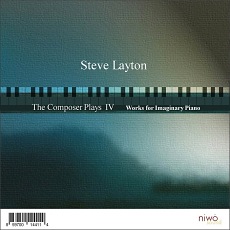 On a personal note, I’ll mention the release of my own new CD,
On a personal note, I’ll mention the release of my own new CD, 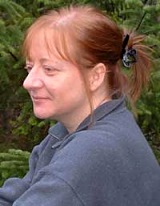 Katharine is a British-born composer, sound artist and writer, currently living about as far out West as you can get on Pender Island in BC, Canada. Prior to this “slightly alarming” (her words) change of direction she was Director of the Electronic Music Studios at Goldsmiths, University of London. She now supports the composing habit by freelance writing and some teaching. She’s composed instrumental music, music combining instruments or voices and digital media, and purely electronic work. Her music makes frequent use of documentary sound – conversation, city sounds, birds etc. – in a way that perhaps invites new appreciation both of the ‘real world’ and of the concert hall. Increasingly, she writes about music, in particular electroacoustic and electronic music. Her book of experimental writings on recent electronic music (of many kinds and approaches) entitled Sounding Art: Eight Literary Excursions through Electronic Music was published by Ashgate in 2004.
Katharine is a British-born composer, sound artist and writer, currently living about as far out West as you can get on Pender Island in BC, Canada. Prior to this “slightly alarming” (her words) change of direction she was Director of the Electronic Music Studios at Goldsmiths, University of London. She now supports the composing habit by freelance writing and some teaching. She’s composed instrumental music, music combining instruments or voices and digital media, and purely electronic work. Her music makes frequent use of documentary sound – conversation, city sounds, birds etc. – in a way that perhaps invites new appreciation both of the ‘real world’ and of the concert hall. Increasingly, she writes about music, in particular electroacoustic and electronic music. Her book of experimental writings on recent electronic music (of many kinds and approaches) entitled Sounding Art: Eight Literary Excursions through Electronic Music was published by Ashgate in 2004.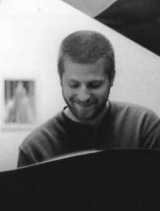 Ryan is a San Francisco-based composer and performer, most frequently combining the two in the “rock chamber ensemble”
Ryan is a San Francisco-based composer and performer, most frequently combining the two in the “rock chamber ensemble” 
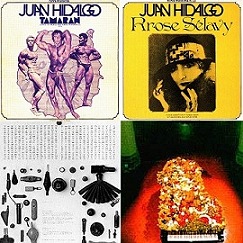 Juan Hidalgo’s
Juan Hidalgo’s 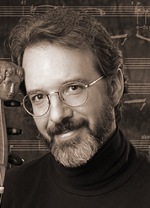 Christopher Hopkins is an assistant professor of music composition at Iowa State University of Science and Technology, where he teaches courses in composition, music technology, sound synthesis and orchestration. He is director of the Lipa Festival of Contemporary Music. As a composer he works in both experimental and traditional forms, with special interests in electroacoustic music, innovative notations and instrumental techniques, and dialectics between historical and contemporary musical forms.
Christopher Hopkins is an assistant professor of music composition at Iowa State University of Science and Technology, where he teaches courses in composition, music technology, sound synthesis and orchestration. He is director of the Lipa Festival of Contemporary Music. As a composer he works in both experimental and traditional forms, with special interests in electroacoustic music, innovative notations and instrumental techniques, and dialectics between historical and contemporary musical forms.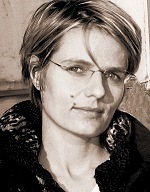 Katharina grew up in Zurich, playing piano and singing in choir through her teens. Her formal music studies began at Jazz School Zurich, but she quickly bailed to Boston and the Berklee College of Music for her BA. Jump again to Zurich, then over to the Royal Academy of Music in London for her MA, and finally (?…) hop back over to the States and Columbia for her DMA. Her works, electronic & acoustic, are often inspired and linked with the visual arts, theater and inquiries into perceptual and phenomenological issues.
Katharina grew up in Zurich, playing piano and singing in choir through her teens. Her formal music studies began at Jazz School Zurich, but she quickly bailed to Boston and the Berklee College of Music for her BA. Jump again to Zurich, then over to the Royal Academy of Music in London for her MA, and finally (?…) hop back over to the States and Columbia for her DMA. Her works, electronic & acoustic, are often inspired and linked with the visual arts, theater and inquiries into perceptual and phenomenological issues. Claus is another composer I ran into on Myspace, and we’ve been corresponding for a few months now. Gahrn began his musical studies as a classical guitarist; from 2001 he studied composition and electroacoustic music at the Academy of Music in Esbjerg, Denmark, earning his MA degree with distinction in 2006. That’s Claus on the right in the photo, with his own young ensemble (including his pianist wife Malwina). There are links above that will take you both to Claus’ personal site, as well as that of the ensemble itself. Under “Media” at either, you’ll find excellent MP3 recordings and performances of Gahrn’s often-introspective yet just-as-often-edgy work.
Claus is another composer I ran into on Myspace, and we’ve been corresponding for a few months now. Gahrn began his musical studies as a classical guitarist; from 2001 he studied composition and electroacoustic music at the Academy of Music in Esbjerg, Denmark, earning his MA degree with distinction in 2006. That’s Claus on the right in the photo, with his own young ensemble (including his pianist wife Malwina). There are links above that will take you both to Claus’ personal site, as well as that of the ensemble itself. Under “Media” at either, you’ll find excellent MP3 recordings and performances of Gahrn’s often-introspective yet just-as-often-edgy work.
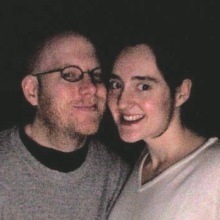 Mike over at
Mike over at 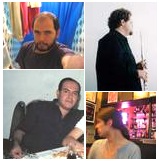 If your idea of contemporary Mexican art music is still Chavez and Revueltas, you’re so far out of date that it’s not even funny! I can’t catch you up on composers from the 50’s through the 90’s; Google will have to help you out there. Some names to explore might be Manuel Enríquez, Mario Lavista, Federico Ibarra-Groth, Marcela Rodríguez, Hilda Paredes, Hebert Vázquez, Germán Romero, Gabriela Ortíz Torres, Juan Felipe Waller, Julio Estrada, Mauricio Beltránand. (Feeling out of the loop already? Then get busy…)
If your idea of contemporary Mexican art music is still Chavez and Revueltas, you’re so far out of date that it’s not even funny! I can’t catch you up on composers from the 50’s through the 90’s; Google will have to help you out there. Some names to explore might be Manuel Enríquez, Mario Lavista, Federico Ibarra-Groth, Marcela Rodríguez, Hilda Paredes, Hebert Vázquez, Germán Romero, Gabriela Ortíz Torres, Juan Felipe Waller, Julio Estrada, Mauricio Beltránand. (Feeling out of the loop already? Then get busy…)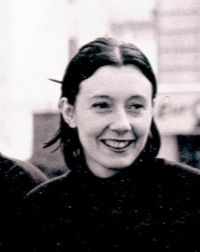 Cecilia will tell you:
Cecilia will tell you: